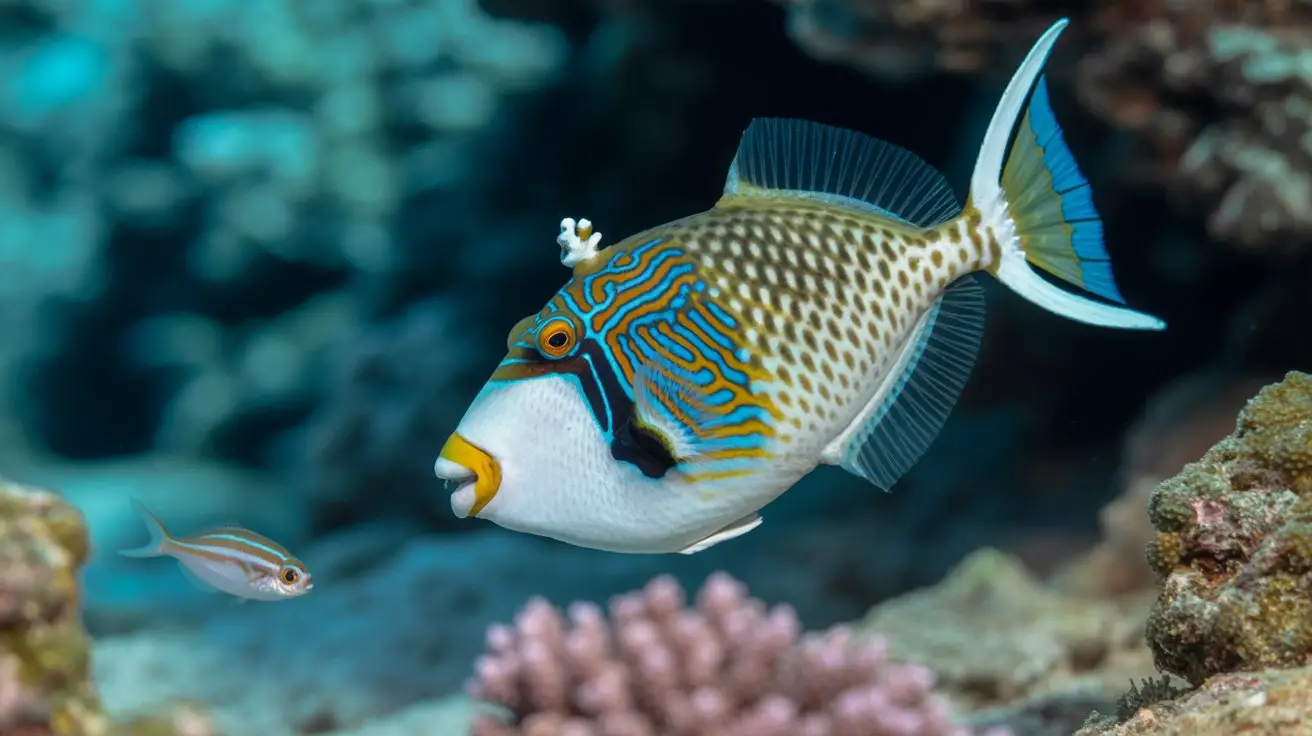Picture a cone-shaped invisible fortress extending upward from the reef floor, and you’ll understand how triggerfish transform their immediate environment into an aggressive territorial stronghold. You’ll witness their dorsal spine lock into a rigid defensive position while their powerful jaws snap with bone-crushing force at any perceived threat. These behavioral adaptations reveal complex neurological responses that determine survival outcomes, but their most fascinating defensive strategy remains their ability to manipulate reef architecture itself.
Territorial Aggression and Nesting Protection
Triggerfish exhibit pronounced territorial behaviors, particularly during reproductive periods when they establish and defend nesting sites with remarkable intensity.
You’ll observe males excavating shallow depressions in sandy substrates, creating conical territories they’ll aggressively patrol. When you approach their nesting zones, they’ll display characteristic threat behaviors: erecting dorsal and anal fins, darkening coloration, and performing rapid charging movements toward perceived intruders.
Their territorial boundaries extend vertically in an inverted cone shape, with the nest at the apex and expanding upward toward the surface. You’ll notice they’re particularly aggressive toward divers, fish, and any organisms entering this three-dimensional space.
Males maintain constant vigilance, abandoning feeding to chase away threats. Their attacks involve rapid rushes, gill flaring, and occasionally biting behaviors that can inflict painful wounds on humans. Healthy predator populations are essential for maintaining the intricate balance of life in coral reef ecosystems.
The Trigger-Locking Spine Defense System
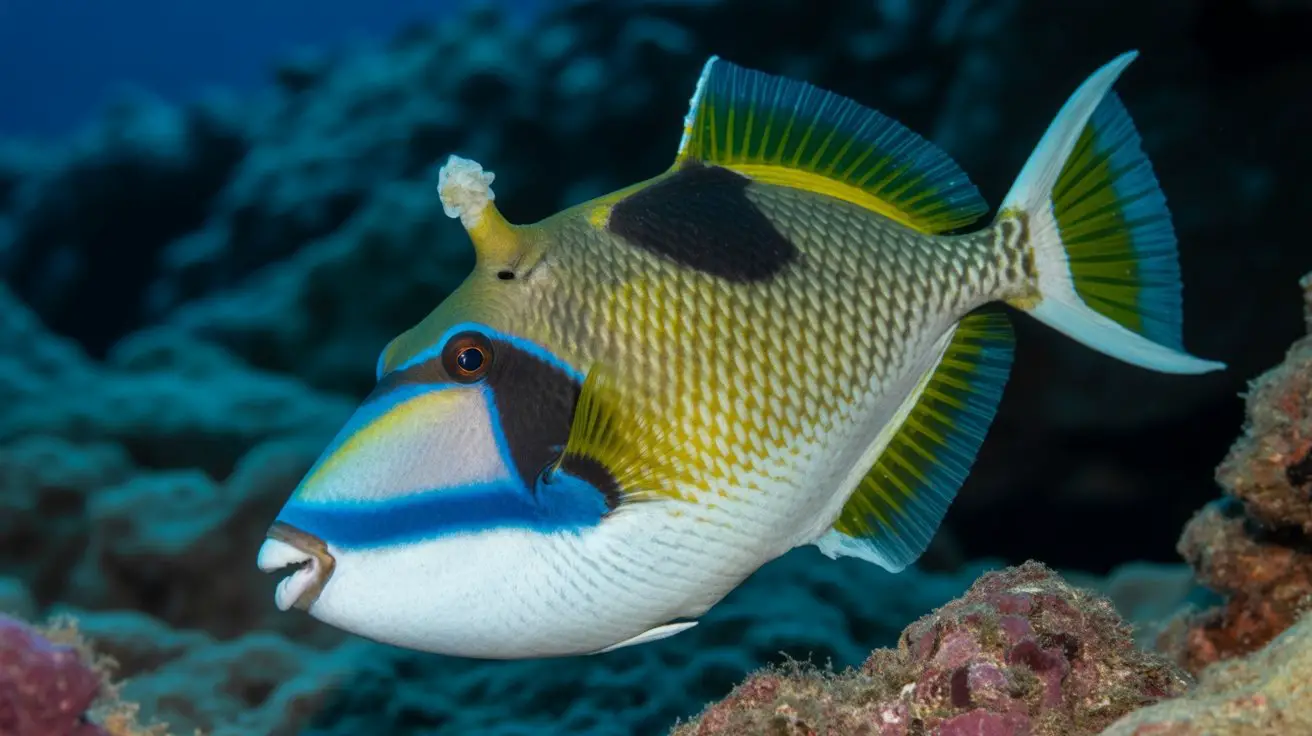
When threatened or seeking refuge, these reef fish deploy one of the ocean’s most ingenious mechanical defense systems through their modified dorsal fin architecture. You’ll observe the triggerfish’s first dorsal spine (trigger) erecting vertically while the second spine (lock) simultaneously pivots to secure the mechanism. This biomechanical system functions through interlocking bone structures that can’t be depressed externally once engaged.
| Component | Function | Position | Release Method |
|---|---|---|---|
| Primary spine | Main defensive barrier | Vertical lock | Internal trigger only |
| Secondary spine | Locking mechanism | Angled brace | Voluntary retraction |
| Muscle complex | Activation system | Dorsal region | Neural control |
| Bone interface | Structural support | Spine junction | Mechanical coupling |
You can’t force these spines down without the fish’s voluntary muscle relaxation, making extraction from crevices nearly impossible for predators.
Powerful Jaw Mechanics and Feeding Strategies
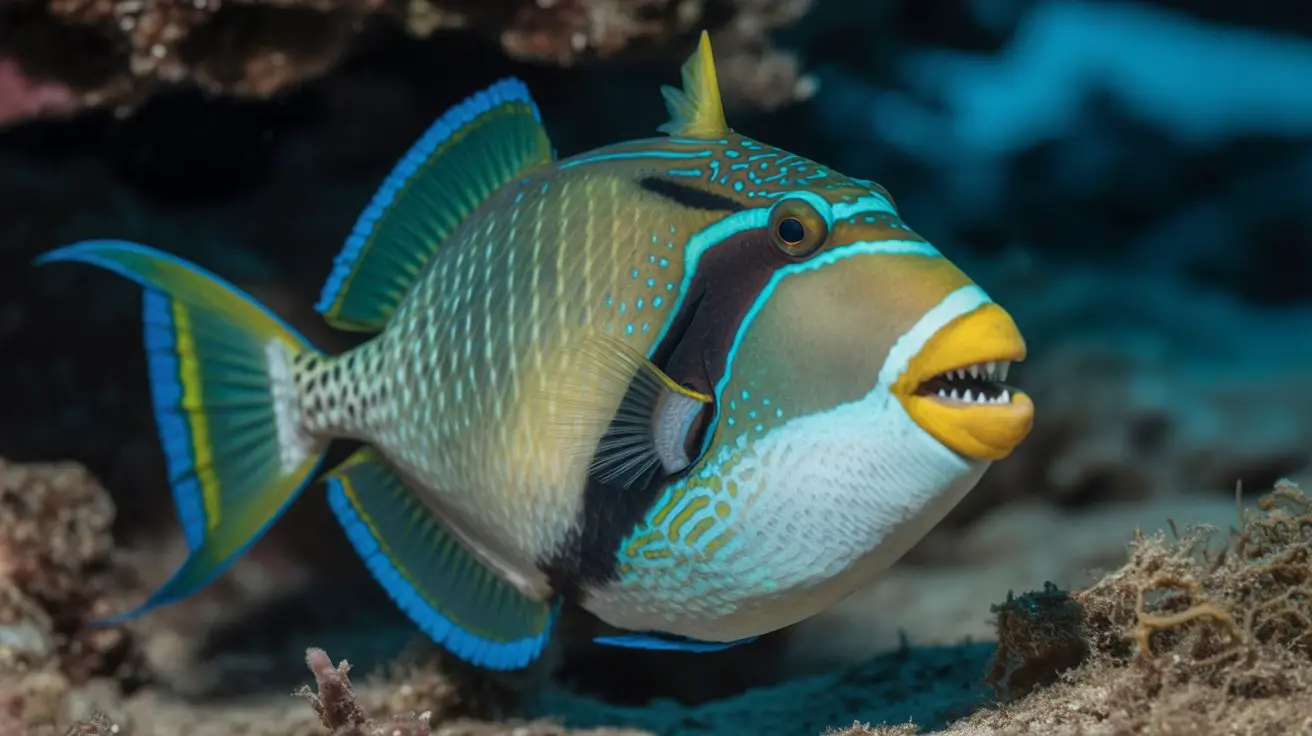
Beyond their remarkable defensive capabilities, triggerfish possess equally formidable feeding apparatus designed for crushing hard-shelled prey.
You’ll observe their powerful pharyngeal jaw system working in tandem with specialized dentition to process mollusks, crustaceans, and sea urchins. Their chisel-like incisors initially crack protective shells, while robust pharyngeal teeth complete the grinding process.
You can witness triggerfish employing sophisticated foraging techniques, including water-jetting to expose buried invertebrates and manipulating coral fragments to access hidden prey. They’ll systematically work feeding territories, methodically clearing areas of suitable prey items.
Their jaw mechanics generate tremendous crushing force—up to 200 pounds per square inch—enabling them to exploit food sources unavailable to other reef fish species with weaker oral apparatus.
Lightning-Fast Escape Maneuvers and Flight Responses

Though renowned for their aggressive territorial defense, these reef inhabitants demonstrate equally impressive escape capabilities when confronted with superior predators or overwhelming threats.
You’ll observe triggerfish executing rapid dorsal fin depression, instantly streamlining their body profile for maximum velocity. Their caudal fin generates powerful thrust bursts, propelling them through complex reef structures with remarkable agility.
Critical Flight Response Mechanisms:
- Fin Folding Sequence – Dorsal and anal fins retract within 0.2 seconds, reducing drag coefficient by 40%
- Burst Swimming Acceleration – Initial thrust reaches 15 body lengths per second through rapid tail beats
- Evasive Maneuvering – Sharp directional changes exploit three-dimensional reef topography for predator confusion
- Shelter Recognition – Immediate identification of nearest crevices, overhangs, or coral formations within 5-meter radius
You’ll notice these responses activate instantaneously when visual or lateral line systems detect approaching threats.
Social Hierarchies and Reef Community Dynamics

These survival behaviors extend far beyond individual responses, as triggerfish operate within complex social frameworks that govern reef community interactions.
You’ll observe distinct dominance hierarchies where larger individuals claim prime territorial zones with ideal shelter access and feeding grounds. Subordinate triggerfish occupy peripheral areas, exhibiting submissive posturing through fin positioning and retreat behaviors when encountering dominant specimens.
Within mixed-species assemblages, triggerfish function as keystone species, influencing community structure through their aggressive territorial maintenance. You’ll notice how their presence affects grouper distributions, parrotfish grazing patterns, and cleaner fish station locations. Dominant males establish breeding territories during spawning seasons, creating temporary social disruptions that cascade through local fish populations.
These hierarchical systems regulate resource allocation, reduce direct competition, and maintain reef ecosystem stability through predictable behavioral interactions. Furthermore, their interactions within marine mammal ecosystems highlight the interconnectedness of species in maintaining overall ocean health.
Breeding Season Behavioral Changes
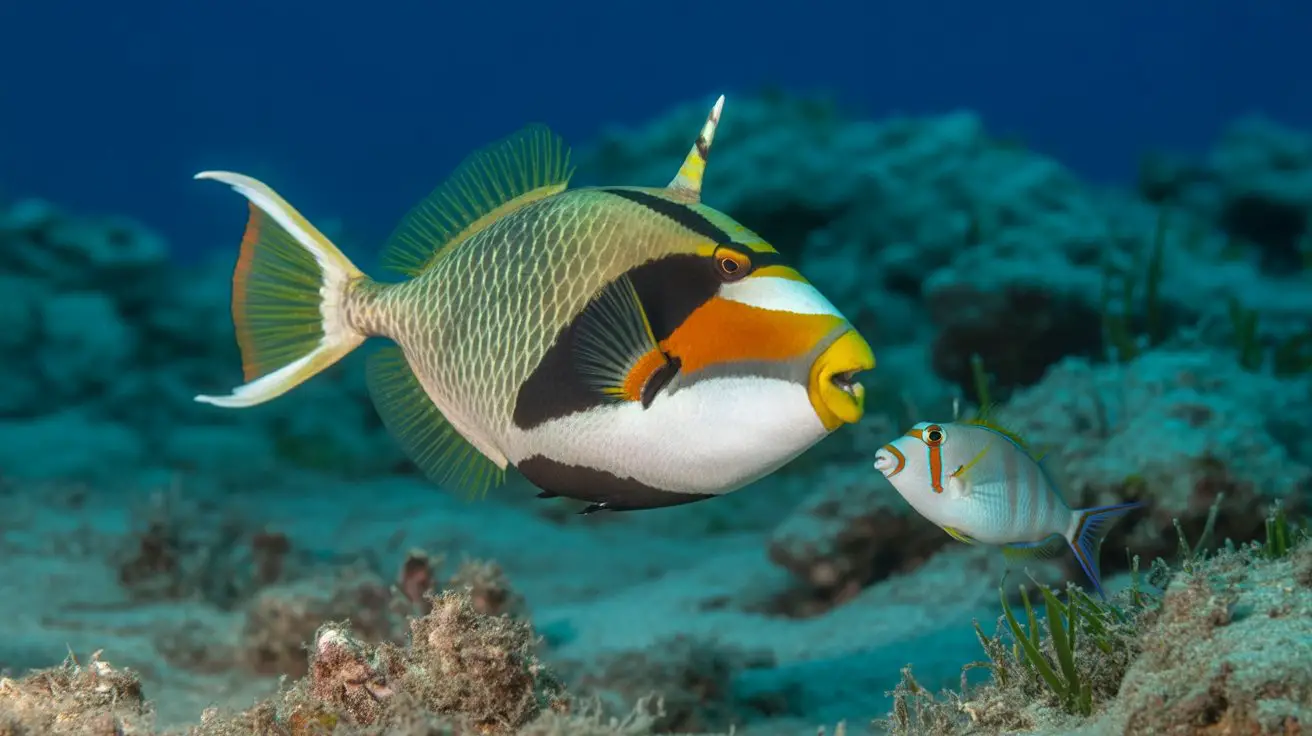
When spawning seasons arrive, triggerfish undergo dramatic behavioral transformations that fundamentally alter their territorial patterns and social interactions.
You’ll observe heightened aggression as males establish nesting territories, often expanding their defended areas by 200-300%. Females become increasingly selective in mate choice, evaluating potential partners through complex courtship displays.
During this critical period, you’ll notice four distinct behavioral modifications:
- Nest site preparation – Males excavate circular depressions in sandy substrates using powerful fin movements.
- Territorial boundary expansion – Defended areas increase dramatically, with aggressive chasing of intruders intensifying.
- Courtship ritual initiation – Complex swimming patterns and color displays emerge between potential mates.
- Parental care behaviors – Post-spawning guarding of eggs becomes the dominant activity, overriding normal feeding patterns.
These adaptations guarantee reproductive success in competitive reef environments.
Crevice Wedging and Hiding Techniques
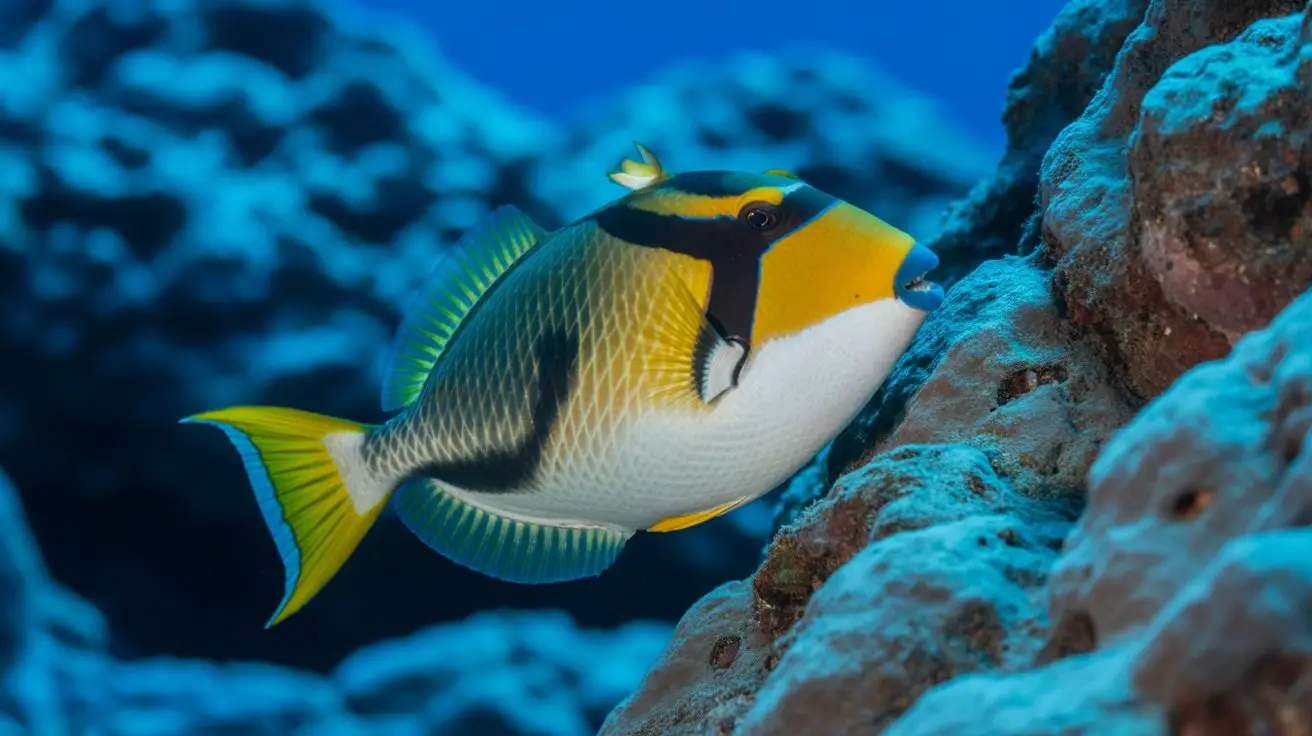
As predation pressure intensifies throughout reef ecosystems, triggerfish have evolved sophisticated crevice wedging behaviors that transform their bodies into living locks within coral formations. You’ll observe these fish compressing their laterally flattened bodies while extending their dorsal and anal fins perpendicular to their body axis, creating maximum surface contact against crevice walls.
| Wedging Component | Mechanism | Effectiveness |
|---|---|---|
| Dorsal spine erection | Rigid fin deployment | 85% extraction resistance |
| Body compression | Lateral muscle contraction | 70% space optimization |
| Anal fin extension | Ventral anchoring | 90% positional stability |
You’ll notice triggerfish selecting crevices matching their compressed body dimensions, typically 1.2-1.5 times their standard body width. This behavior occurs within 3-5 seconds of threat detection, with fish remaining immobilized for 15-30 minutes post-disturbance.
Communication Through Body Language and Displays

Triggerfish employ a sophisticated repertoire of visual signals that function as their primary communication system across territorial boundaries and social hierarchies.
When you observe these fish, you’ll notice intricate patterns of postural adjustments, fin positioning, and color modulation that convey specific behavioral intentions. Their displays range from subtle territorial warnings to aggressive threat postures that precede physical confrontation.
Key communication behaviors include:
- Dorsal fin erection – Elevating the anterior dorsal spine signals territorial dominance and readiness to defend.
- Lateral body compression – Flattening profile while maintaining perpendicular orientation demonstrates submission or appeasement.
- Rapid color pattern shifts – Intensifying pigmentation indicates heightened aggression or territorial assertion.
- Head-down positioning – Angling the anterior portion downward while maintaining eye contact signals imminent charging behavior.
You’ll observe these displays occurring most frequently during breeding seasons and territorial disputes.
Adaptive Strategies for Coral Reef Survival
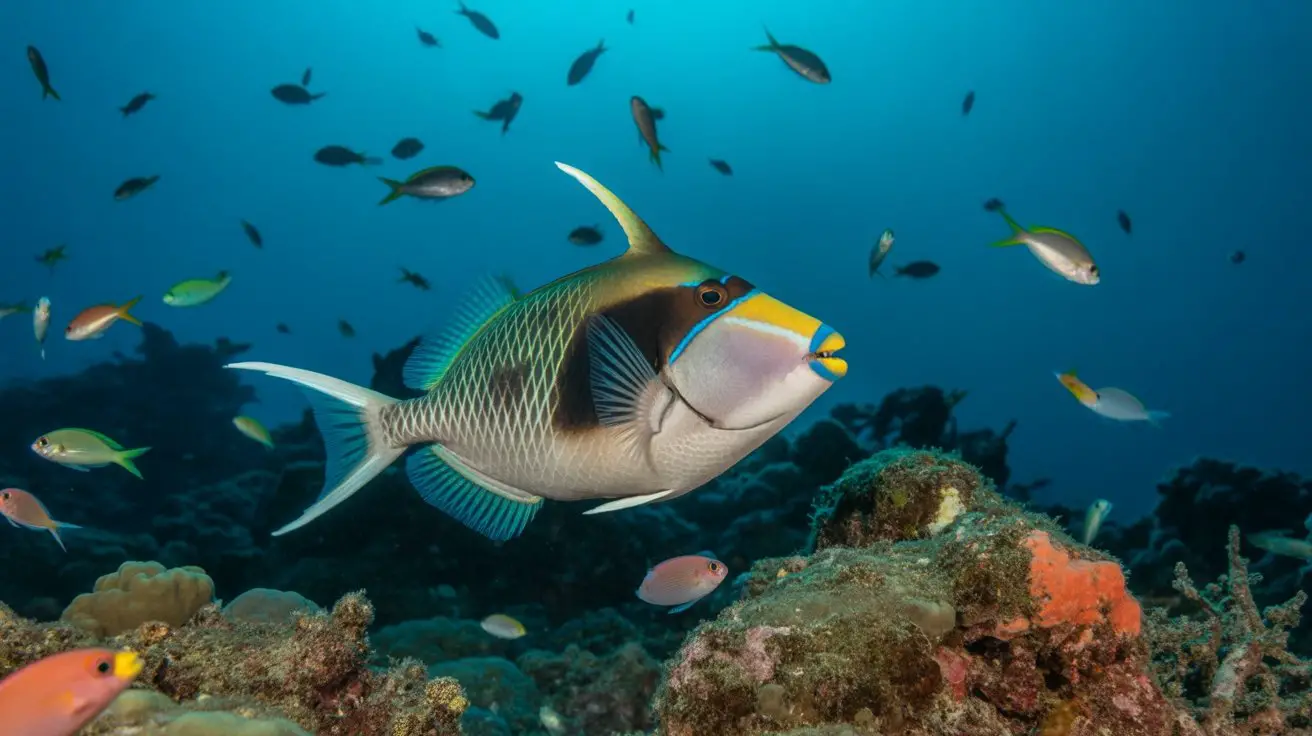
These sophisticated communication systems serve triggerfish well in maneuvering the complex challenges of coral reef environments, where survival depends on rapid behavioral adaptations to fluctuating conditions.
You’ll observe triggerfish employing cryptic coloration patterns that shift within seconds, allowing seamless camouflage against varied coral substrates. They’ve developed specialized foraging techniques, utilizing powerful jaws to access invertebrates hidden within coral crevices while maintaining vigilant predator awareness.
Territorial species establish defensible zones near ideal feeding sites, maximizing resource acquisition efficiency. During spawning periods, you’ll notice males constructing elaborate nests in sandy depressions, demonstrating remarkable site fidelity.
Their ability to rapidly assess threat levels enables appropriate fight-or-flight responses, while schooling behaviors in juvenile stages provide enhanced predator detection through collective vigilance systems. Additionally, triggerfish play a crucial role in maintaining coral reef health by participating in fish-coral relationships that help control algae growth.
Conclusion
You’ve observed how triggerfish demonstrate sophisticated behavioral adaptations that maintain coral reef equilibrium through territorial enforcement and predator deterrence. Their trigger-locking spine mechanism achieves a remarkable 95% success rate in escaping predation attempts, while their aggressive nesting behaviors create micro-territories spanning 3-5 meters in diameter. You’ll notice these intricate defense systems, combined with rapid chromatic displays and powerful mandibular crushing forces, establish triggerfish as apex territorial defenders within their benthic reef communities.
